Real Zaragoza are on the brink of a return to La Liga, ending a seven-year absence. Leading the way is a forward by the name of Luis Suárez.
No, not Uruguayan Luis Suárez. Columbian Luis Suárez. The one who suffered a terrible skull fracture as a teenager and nearly lost his footballing career. The one on loan from Watford and lighting up La Liga2. Oddly enough, in the midst of their injury crisis this past February, Barcelona reportedly made an inquiry on the younger Luis Suárez.
In this scout report, we’ll investigate his technical, tactical, physical and psychological capabilities. But, before proceeding to those sections, a tactical analysis of is usage at Real Zaragoza is fitting.
Position
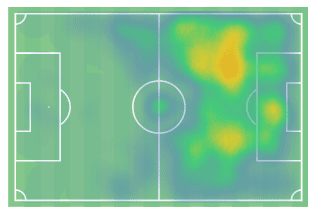
Studying Suárez’s heat map, he’s got a little bit of that Karim Benzema approach to the position. Suárez enjoys dropping into the half-spaces to participate in the build-up, exchanging a pass or two before returning centrally to attack the goal. Those bright yellow markings are true to the film. Once he pulls a centre-back away from the middle, the Columbian carefully maps out his return to the central-channel. Second in La Liga2 with 91 touches in the box and leading the league with 87 shots, his commitment to getting into scoring position is unquestionable.
Zaragoza have mainly operated in a 4-2-3-1 and 4-4-2 this season, so he’s experienced playing in a single or double striker line. As the lone striker, he offers a nice mix of dropping in to combine and runs in behind to create space. When playing in that lone striker role, he’s best utilised as a target to feet as he wins a paltry 25% of his aerial duels. If partnered with a second forward, he’s better suited towards the target role, but he can certainly operate as a second striker too, especially if his side wants to play aerially to the target.
Technique
As a powerful forward, the technical expectations of Suárez are pretty clear; he needs to show enough touch to help with the build-up and finish off plays. He’s generally very reliable playing with his back-to-goal and combining with teammates. He has the strength to fend off defenders and the focus to set back to teammates, making him a capable target player. When he’s able to turn and face the goal, he allows has the ability to set a teammate in on goal through a tight window. As you’ll see momentarily, Suárez doesn’t have the best quality playing long-range passes and fields a really poor 16% success rate of crosses completed. He’s best suited helping with the build-up through quick combinations, utilising short passes, then returning to the central-channel.
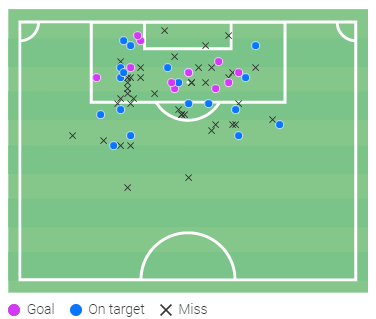
Now, when finishing off a play, while he’s missed a few chances from high-percentage areas, he’s generally a very clinical finisher. His shot map shows that he’s generally very good at hitting the target or, better, scoring from inside the box, but his taste for long-range shots is a weakness in his game, coming in at about a 33% success rate. That number is just for the shots that reached the target. You’ll notice the large number of attempts coming from the left-half space. If he picks up the ball on the left-wing or half-space, he likes to cut onto his favoured right foot and bend one to the far post. That’s a shot that needs improvement as he’s getting few of those on target and far fewer into the net.
One of the reasons for the low success rate of hitting the target from the left-half space is that most of his shots come from an off-balanced position. In fact, after watching all of his shots from the current season, it’s clear that he’s generally off-balance when shooting from distance, typically landing heavily on his favoured right-side. One of the dead giveaways is that he often needs a couple of steps to reclaim his balance. With his shooting leg directing its force towards goal and the rest of his body moving to his right, finding that sweet spot of accuracy and power is extremely difficult. Getting into the habit of squaring up his hips and directing his momentum towards goal, ideally with a diagonal approach, would suit him well.
Finally, with regards to his dribbling, he has attempted 155 dribbles and won 82 of them, good for a 53% success rate. While you can certainly expect a regression once Suárez moves to a more competitive league, it’s worth noting that his dribbling ability is often the product of overwhelming speed and power. He doesn’t use a lot of moves or changes of direction, but he will push the ball by a defender and use his physical qualities to win the duel. That’s an easy enough matchup to gauge, so expect continued success, though a reduction of attempts as Suárez looks for the right opportunities.
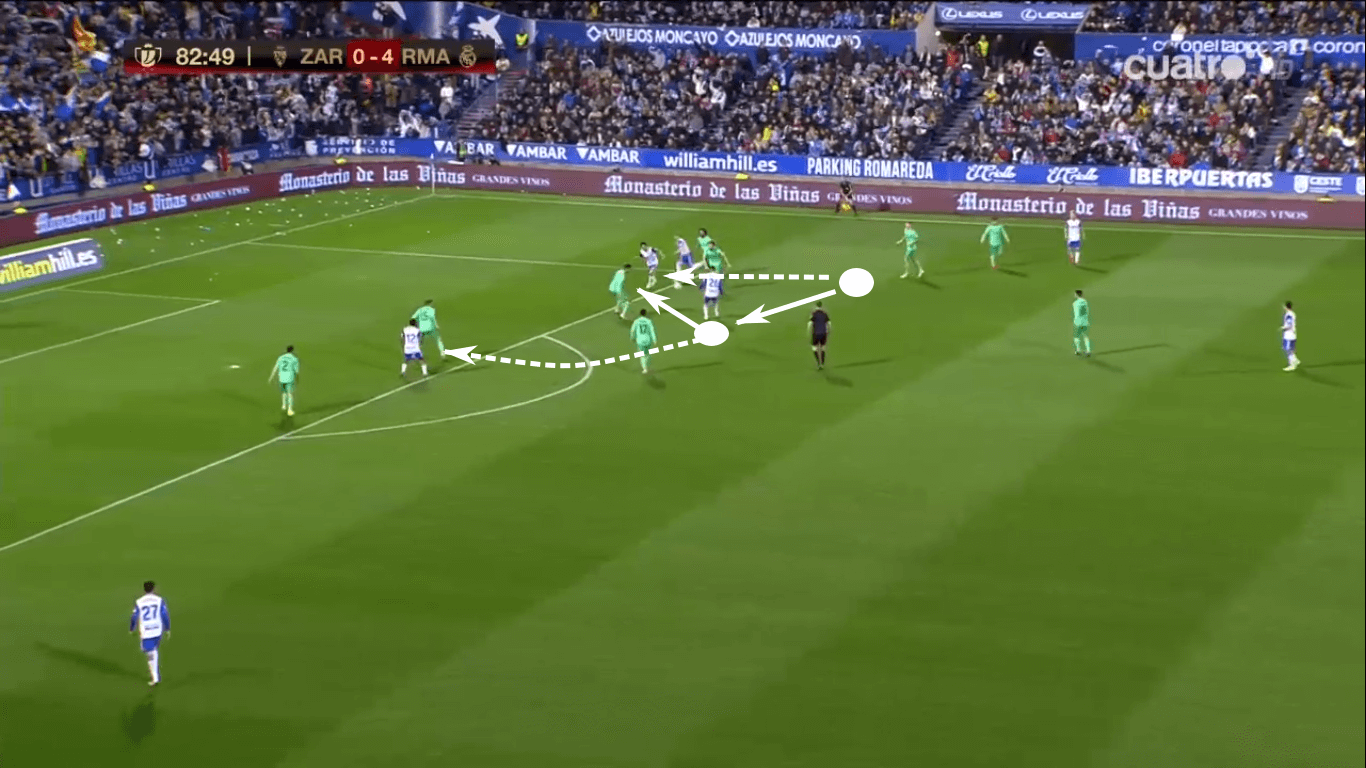
In the Copa del Rey fixture against Real Madrid, Suárez provided a nice glimpse of his positioning in tight spaces and the ability to combine with teammates. After receiving while deeper in the midfield, Guti played a forward pass to Shinji Kagawa, who set back to Guti. A give-and-go with Suárez followed as the Watford-loanee used his excellent body orientation to split the Madrid defence, playing in Guti. Once he released the pass, Suárez took off for the penalty spot, only to see the ball deflect off Guti’s shin and into Alphonse Areola.
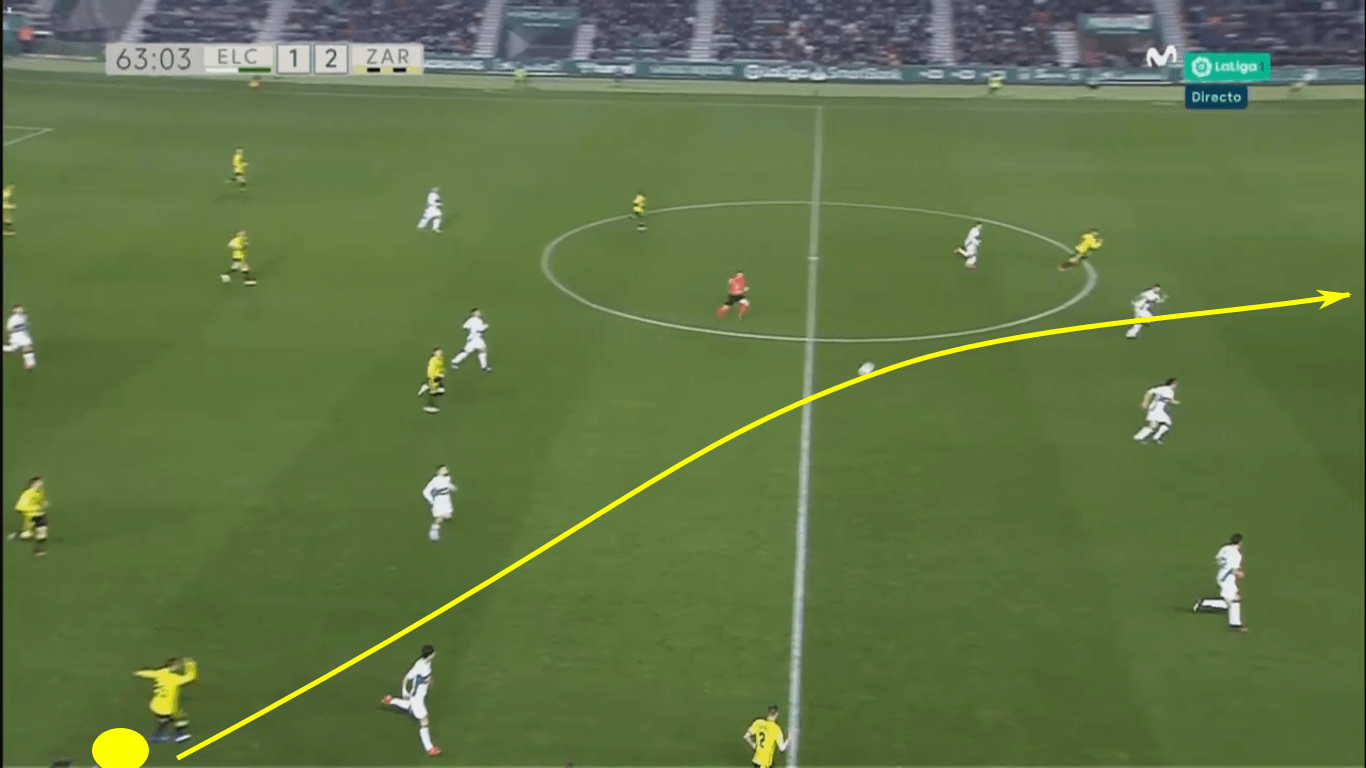
While Suárez is very confident in tight spaces and short passes, he does struggle for accuracy in the long pass stat category. In the away match against Elche, he spotted a teammate with room to run in the central-channel. Though he initially had plenty of nice and space to pick out his target, the pass was mishit and easily collected by the keeper. If you look closely, his follow-through looks like he’s leaning too heavily to his right, off-balance as he attempts to chip the defence. In the end, the attempt looked more like a drive that slices away from the intended target.
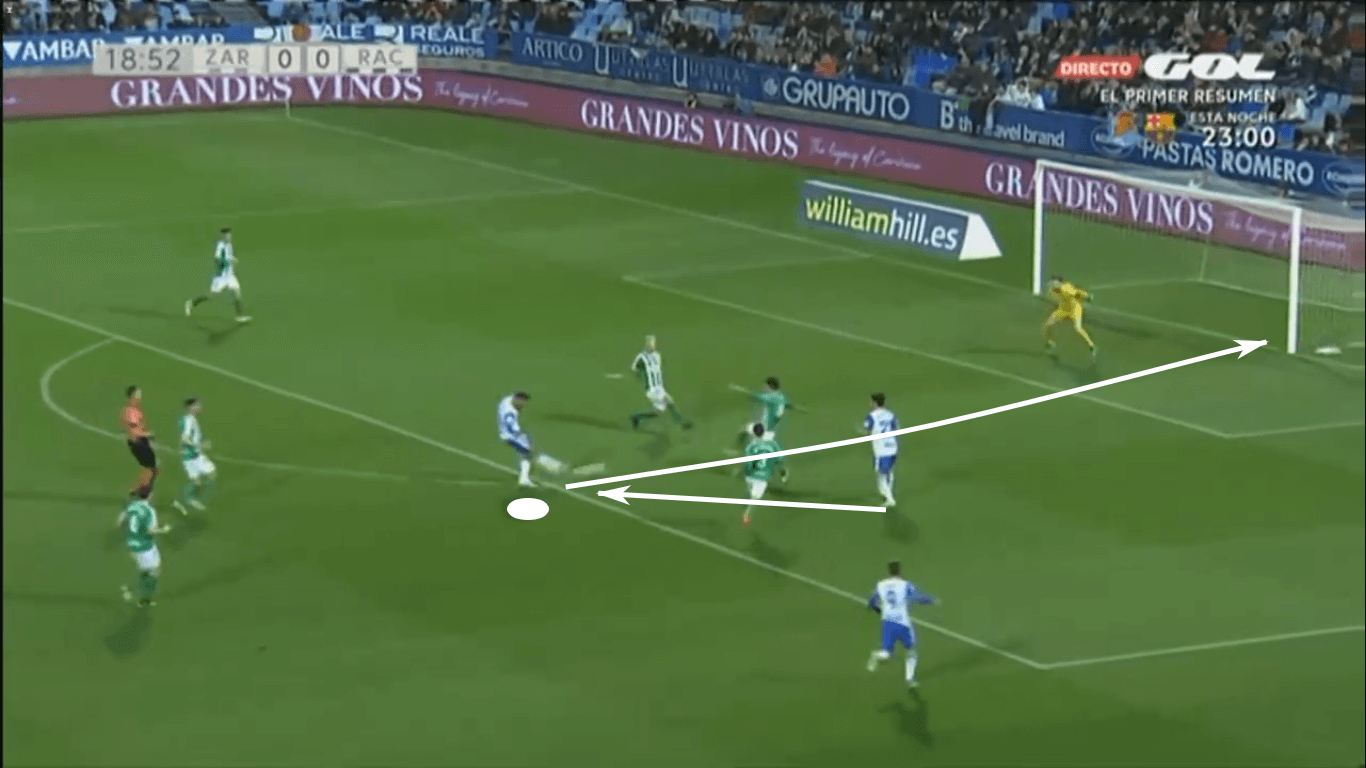
Though his long-range passing is suspect, that’s not why he’s paid the big bucks. It’s for his lethal finishing. Against Racing Santander, Kagawa did well to hold the ball up and set to the oncoming run of Suárez. His first touch shot was brilliant, bending around the defence and beating the keeper at the near post. The combination of accuracy and power on this particular shot was lethal, leaving the keeper with little hope.
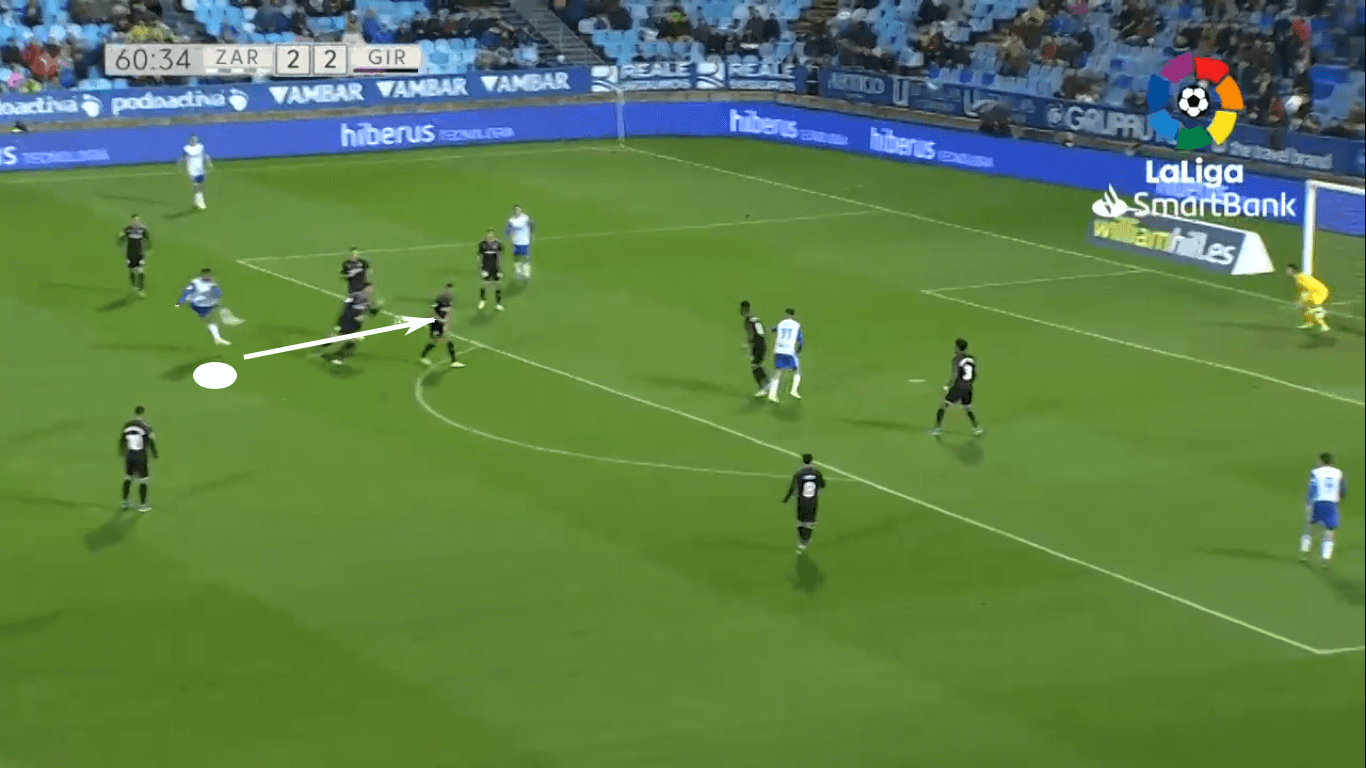
The previous strike came from 18 metres out, which is about Suárez’s range if he wants to hit the ball with power AND on. In a big match against fellow promotion-hopefuls Girona, Suárez hit a shot that was ultimately blocked. However, when you look at the placement of the shot and where the ball makes contact with the defender, it’s pretty clear this one is heading high and wide. Now, dig a little deep. Take a moment to evaluate his body posture. To help you visualize the play, he had just cut in from the left-wing, just outside the half space, and was dribbling on a horizontal line before shooting. As he takes the shot, his momentum carries him along that same horizontal line. Ideally, a player will correct his momentum and direct his course diagonally, at least from that position, to set the momentum of his approach upon the goal. Suárez doesn’t do that, so he’s off-balance. With the power he can generate, even from a poor approach like this one, that ball was bound for the cheap seats.
Individual and team tactics
While his 17 goals are a sign of his finishing ability, Suárez’s 15.1 xG shows that he uses his skillset well to claim those opportunities. In fact, both of those stats are second in La Liga2 to 33-year-old Cristhian Stuani. The pair are the league leaders in the goals + assists and xG + xA statistics too, with Stuani recording 24 and 20.07 to Suárez’s 19 and 19.01 respectively. Suárez currently claims 38% of Zaragoza’s goals, which equals the combined tally of the team’s five next leading scorers.
Part of Suárez’s success is down to his ability to either outmuscle or outrun an opponent. Another aspect is his defensive aggression. He’s very committed in the defensively. Though not a great counter-presser, he’s active in the team’s defensive shape and is quick to pressure negative passes, especially those played to the last defender or goalie. Regardless of whether he wins the ball or not, his defence leaves him high up the field, typically in 1v1 positions.
As mentioned in the positioning section, Suárez tends to pop up in the half-spaces during the build-up, then again near the penalty spot as his team prepares to attack the goal. That’s really when he’s at his best. The game is simplified and he can direct more of his physical and mental energy towards finishing.
In that transition from helping with the build-up to attacking the goal, Suárez seemingly floats along the backline, offering his services as an outlet, but still not drawing enough attention to draw defenders to himself. There’s a stealthy quality to his movement, leaving him virtually undetected until it’s too late. His ability to pull himself out of the play and re-emerge just before going to goal is the foundation of his success.
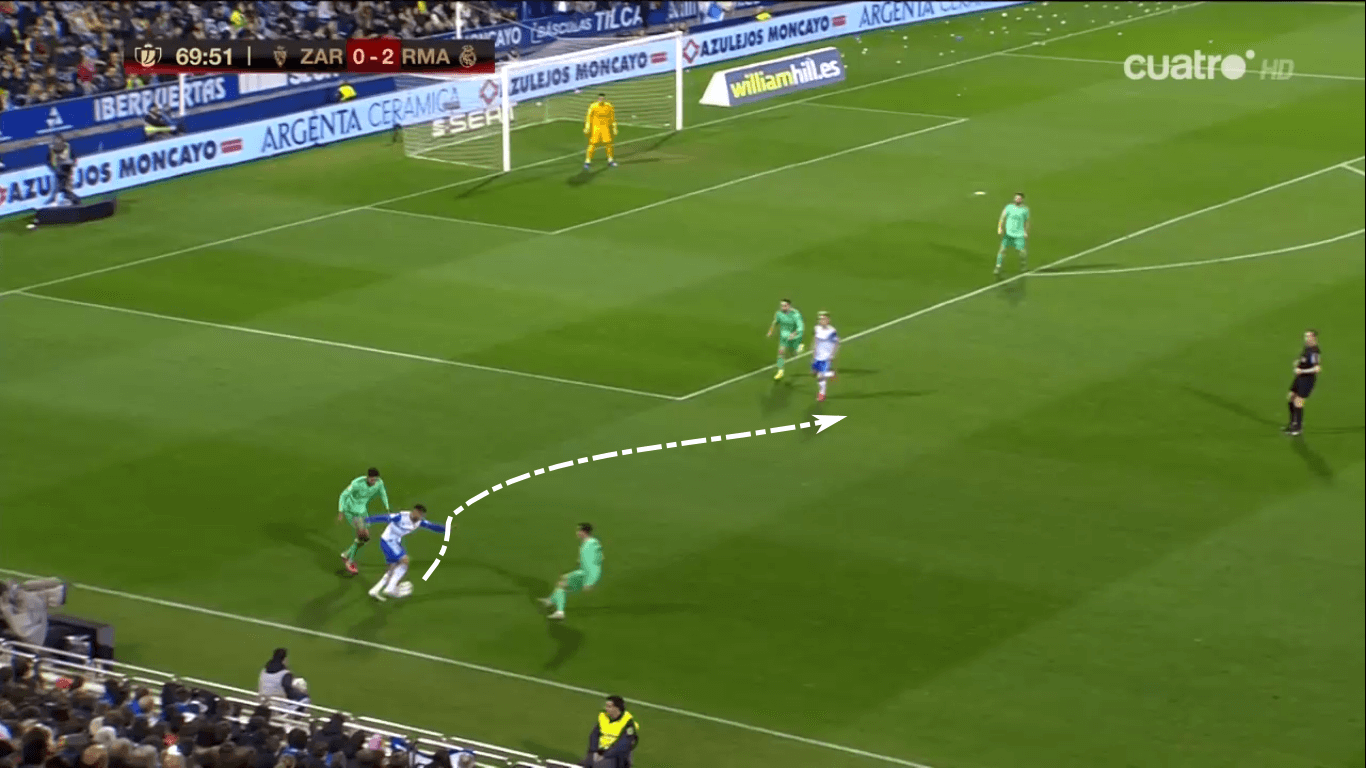
Back to the Copa del Rey match against Real Madrid, one that I find particularly important when evaluating his potential EPL contributions for Watford, Suárez did well to collect the ball and shield it from Raphael Varane. With the ball safely in his possession, Suárez cut to the inside and ask questions of the Madrid defence.
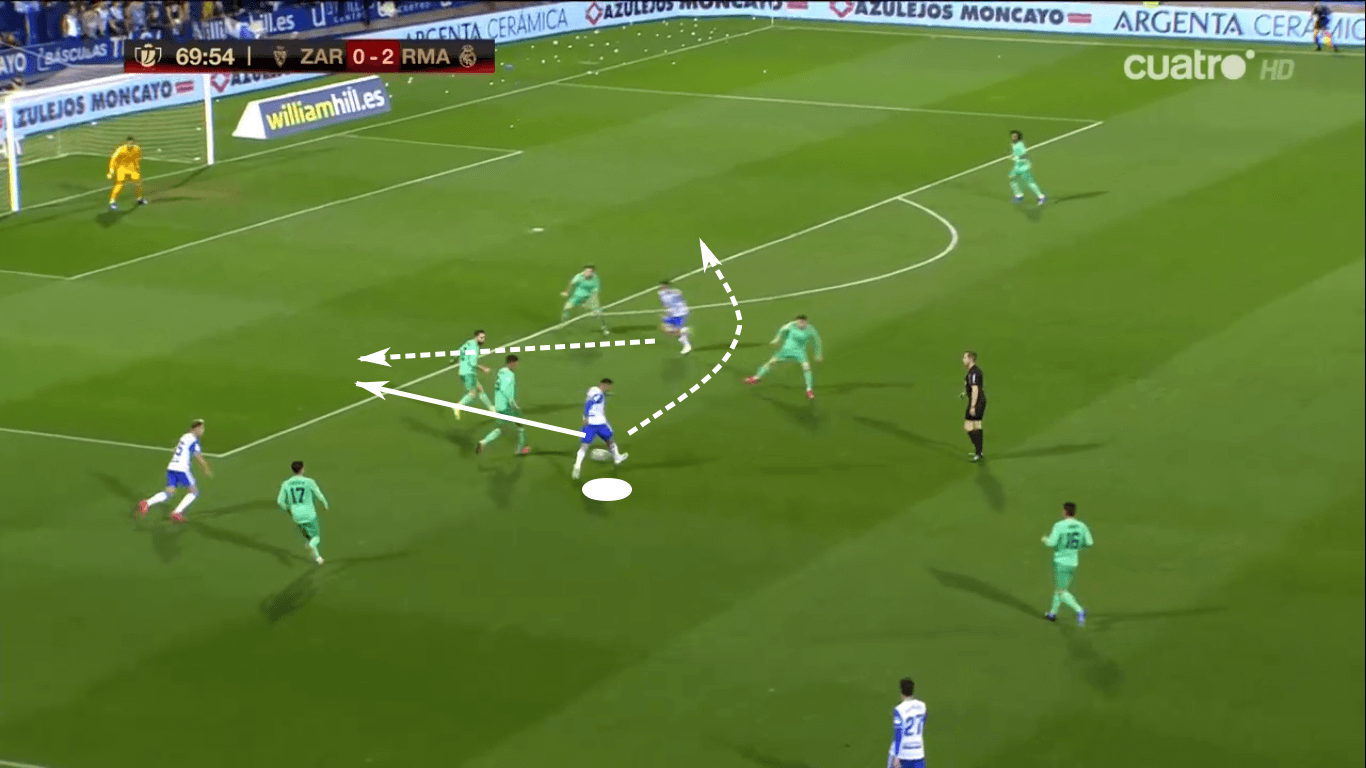
Kagawa made a darting run into the left-half space, taking both Varane and Nacho with him. With both centre-backs shifting their focus to Kagawa, Suárez intelligently moved into a more central position, readying himself for a shot.
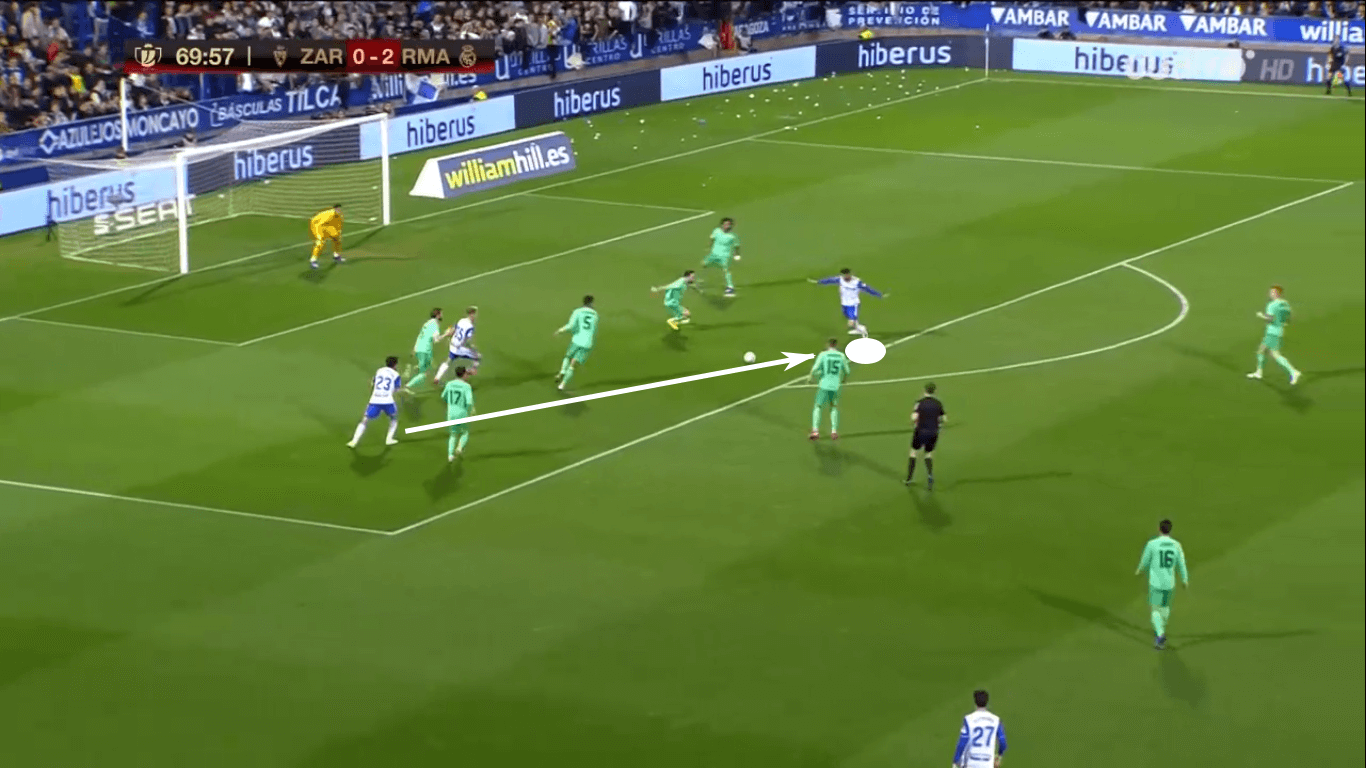
Kagawa bought a few seconds, allowing Suárez to get into position, then played the ball into his teammate. Though this shot was mishit, the sequence offers a really nice idea of Suárez’s ability to hold up the ball, combine with teammates and find space for the shot in a dangerous, central location.
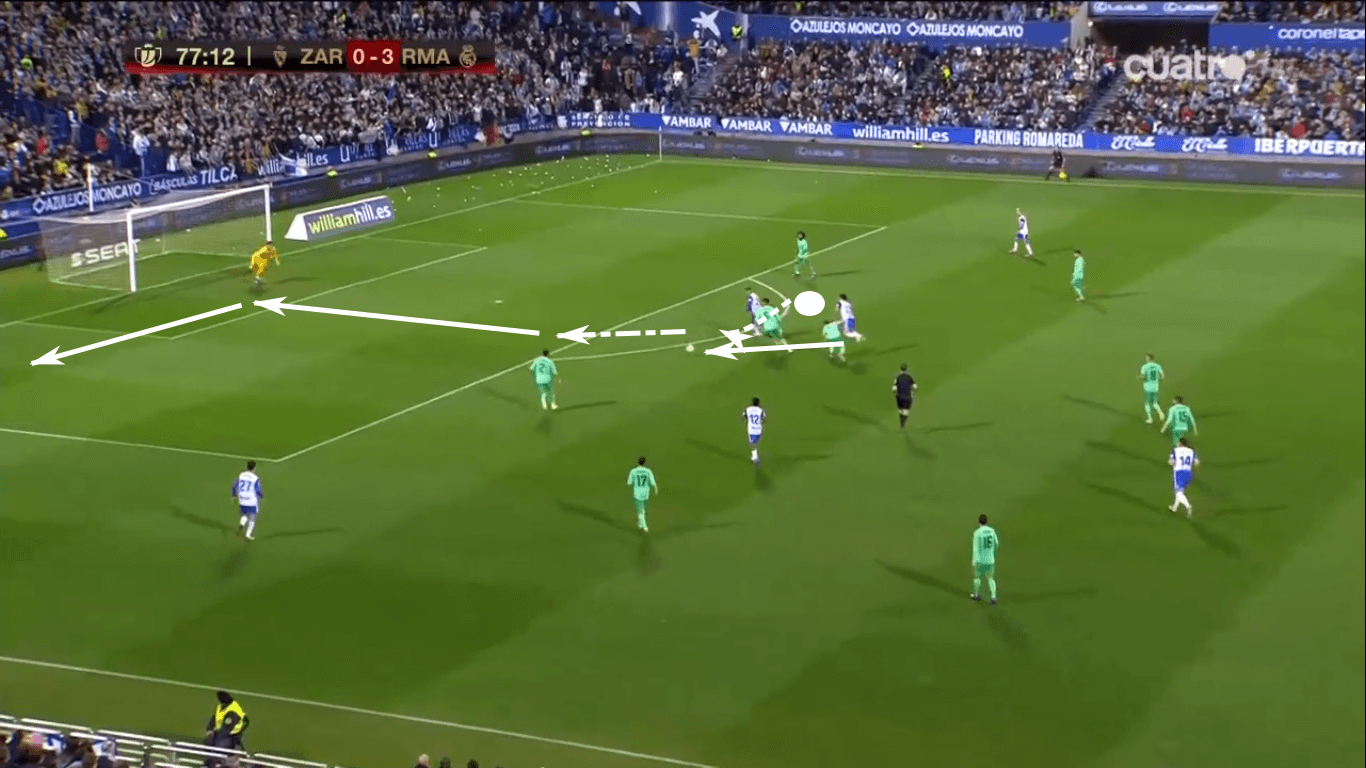
Just seven minutes after that sequence, Suárez again found a pocket of space in the central channel. Again it’s Kagawa feeding his striker, splitting the Varane and Nacho and sending Suárez in on goal. His 1v1 was saved by the outstretched toes of Areola, who needed excellent positioning and all of his 195 cm to make the save. No final product here, but another example of Suárez getting his looks on goal with intelligent movement.
Physical and psychological profile
As mentioned throughout this analysis, Suárez physically profiles as a powerful forward with the ability to outrun opposing centre-backs. At 185 cm. and 74 kg., the Columbian has the size to fend off defenders, but also the mobility to manoeuvre in tight spaces. Plus, he has excellent straight-line speed. Between his strength and speed, he’s a handful for defenders. The youngster also has plus stamina for a forward, allowing him to run behind the lines and pressure opponents for 90 minutes. His 62 progressive runs rate him in the top 10 of the league.
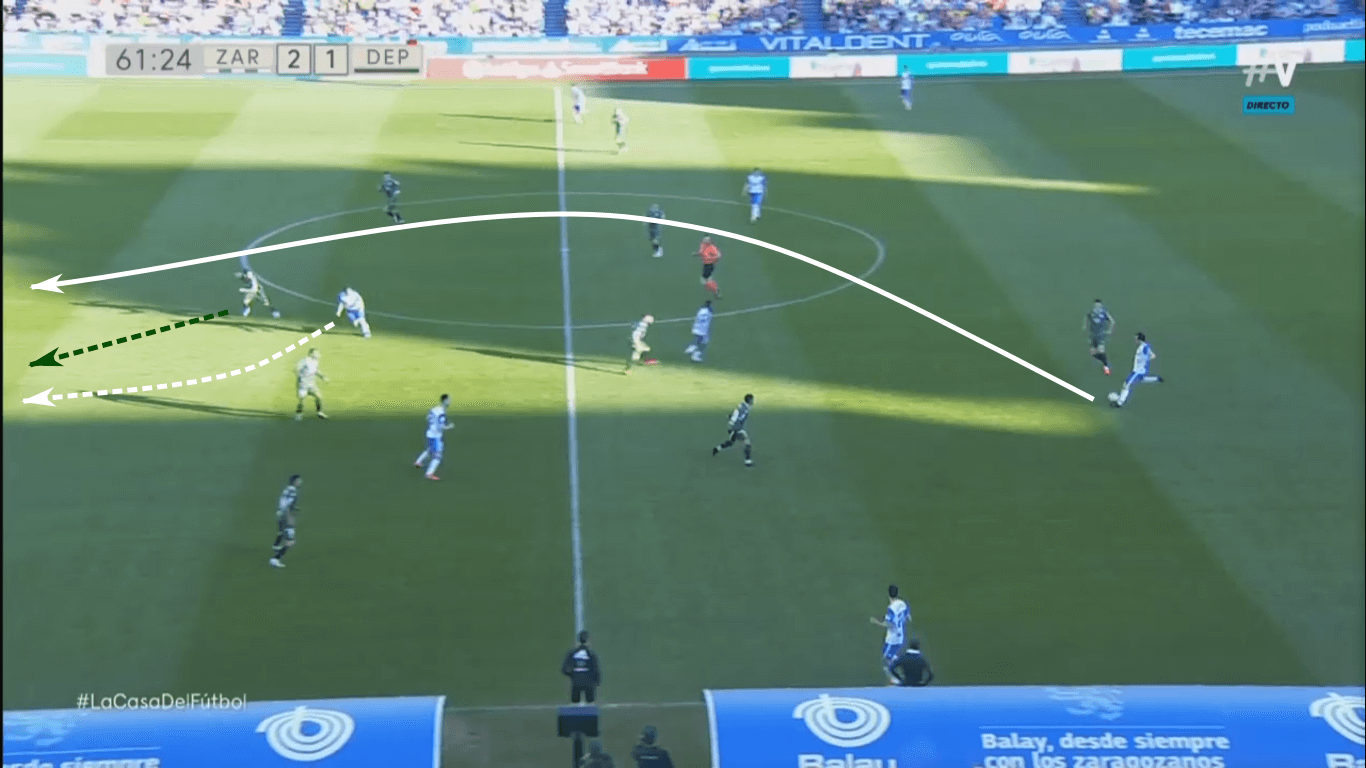
As Zaragoza hosted Deportivo de La Coruña, Íñigo Eguaras led the build-out and picked out the run of Suárez. Though the defender has three or four metres on his teammate, Eguaras sent the pass anyway.
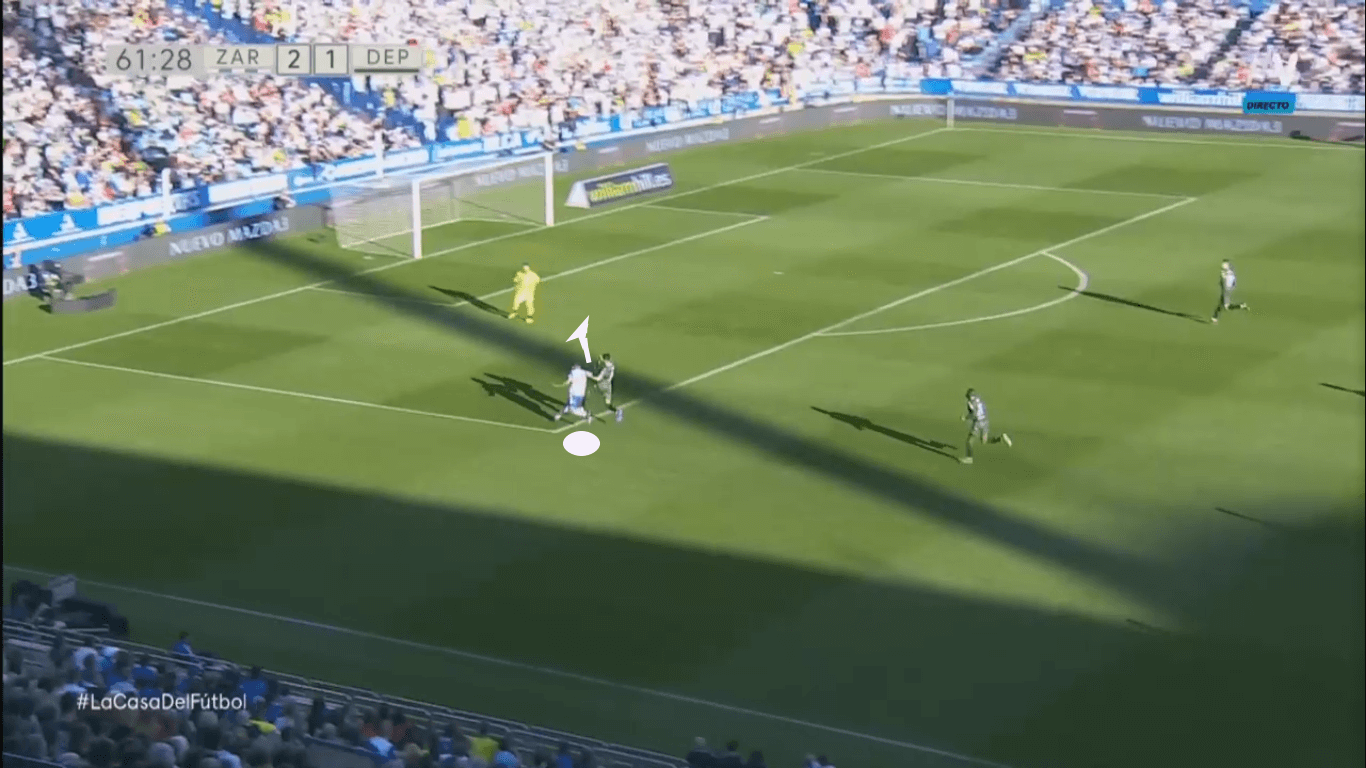
Suárez won the footrace, arriving just ahead of the defender, but not without plenty of contact. With the ball securely in his possession, Suárez pushed back, getting his defender to overcommit and lose his balance. The next move saw the Columbian quickly cut inside of his defender to get himself in on goal.
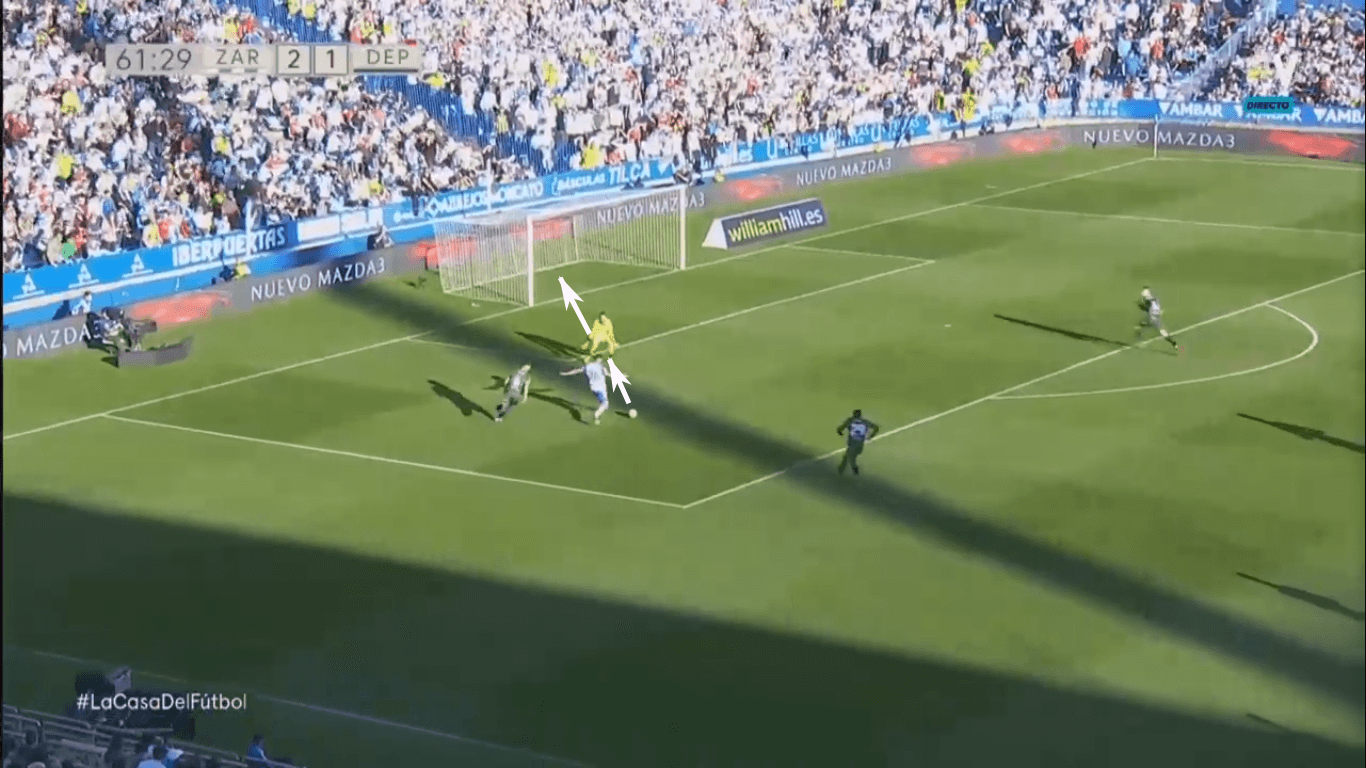
No mistakes about this one as Suárez megged the keeper to round off a fantastic individual effort.
In terms of his psychological makeup, this is a young man who wants to make it. Coming from a tough neighbourhood in Columbia, football was always his out. That determination and focus are present on the pitch. Plus, he’s willing to make runs behind the lines, pressure opponents and sacrifice himself for the success of his teammates. His approach is positive while still retaining the aggressiveness that got him to this stage. You won’t catch him with his head down. Even after missing penalty kicks, he’s shown a positive response, jumping right into the thick of play and trying to get on the ball.
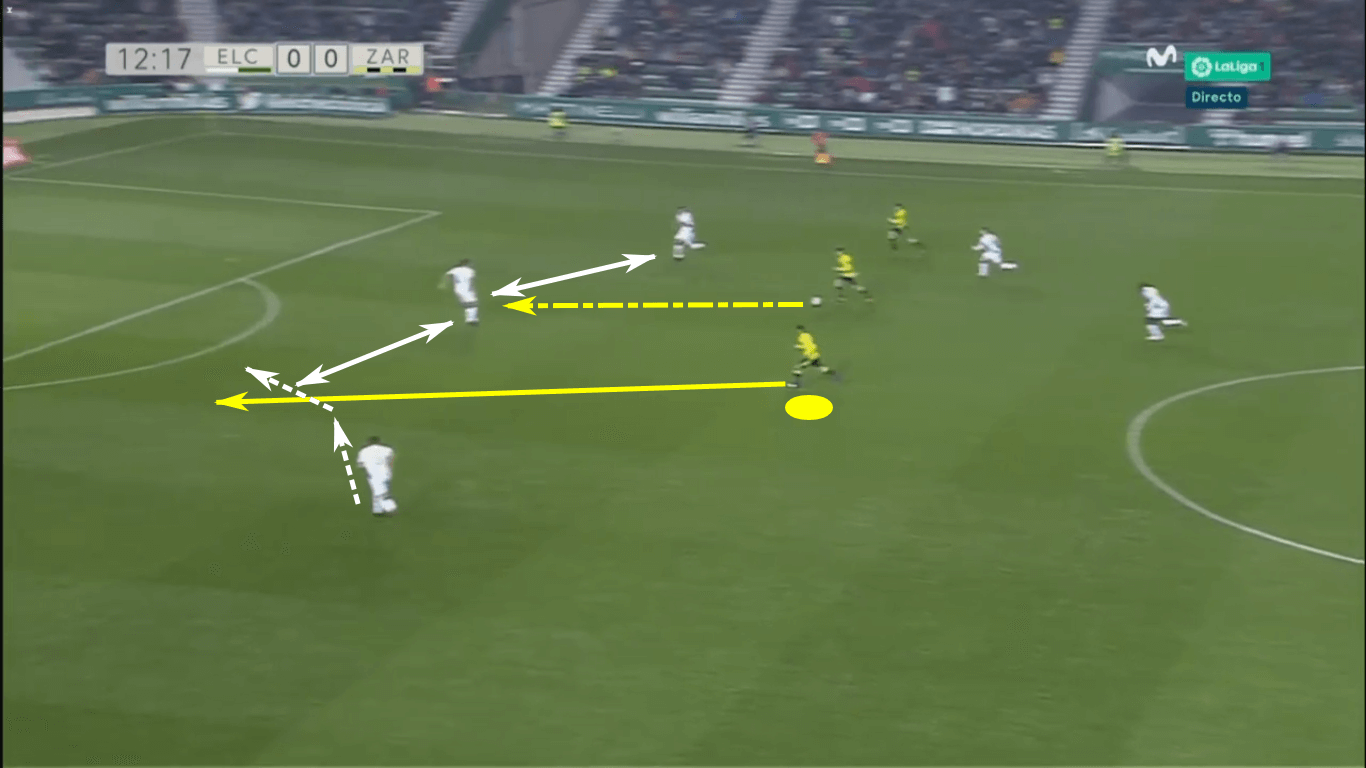
Finally, returning to Elche, teammate Albert Soro made his way forward after intercepting a pass. Rather than moving centrally to get himself in on goal, Suárez moved wider to the left, preventing his defender, Gonzalo Verdu, from offering central coverage. That selfless run of Suárez gave Soro the time and space he needed, hitting a near post screamer to give Real Zaragoza the lead.
Conclusion
On the season, Suárez only has 10 fewer goals than his parent club, Watford, despite them having an xG of 35.02. Though he’s reportedly open to the possibility of remaining with Real Zaragoza if they return to La Liga, Watford would no doubt prefer to have his services in the EPL. If you believe the reports, a contract extension is already in the works.
Though his future is still unknown, it’s clear that Suárez is one of the bright young prospects plying his trade in Europe’s second divisions. Real Zaragoza’s tactics are heavily dependent on his goal-scoring prowess and are looking to ride his efforts back to La Liga. He’s certainly one to watch. Expect him to play in a first division league next season, be it with Watford or out on loan. In time, he might even be the first player who comes to mind when you hear the name “Luis Suárez.”





Comments